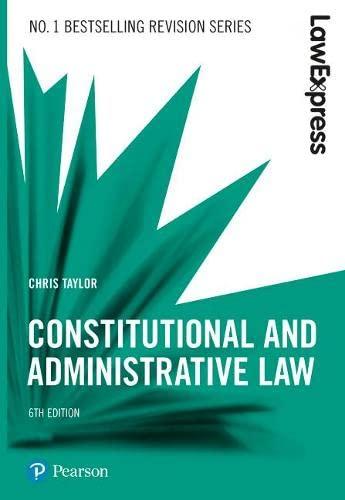Question
Please read below case and answer following questions: The personal representatives of the plaintiff's estate hired an appraiser to appraise personal property in preparation for
Please read below case and answer following questions:
"The personal representatives of the plaintiff's estate hired an appraiser to appraise personal property in preparation for an
estate sale. The appraiser told the representatives that she was no judge of fine art and that they would have to hire an
additional appraiser if she found any fine art. She did not report finding any fine art, and relying on her silence, the
representatives priced and sold two oil paintings at S60. The defendant came to the estate sale and bought the paintings.
Although he had bought and sold some art before, he was not an educated purchaser and had made no more than $55
on any art that he had previously sold; he had bought many paintings that ended up being forgeries. He assumed that the
paintings were not originals, given their price and the fact that professionals were managing the sale, but he liked the
subject matter of one and the frame of the other. Once home with the paintings, he compared their signatures to those in
a book of artists' signatures and thought they looked like those of Martin Johnson Head. As he had done with other art, he
sent photos of the paintings to Christie's in New York, which confirmed the signatures and offered to auction the paintings
for him. The auction netted the defendant $911,000. After finding out what had happened, the estate sued the defendant
buyer, alleging that the contract should have been rescinded on grounds of mutual mistake and unconscionability. The
trial court granted summary judgment in favor of the defendant, and the plaintiff appealed. How do you think the
appellate court ruled, and why? [Estate of Martha Nelson v. Carl Rice and Anne Rice, 12 P.3d 238, 2000 LEXIS APP 159
(2000).]"
- Identify the parties involved in the case dispute (who is the plaintiff and who is the defendant).
- Identify the facts associated with the case and fact patterns.
- Develop the appropriate legal issue(s) in question (i.e., the specific legal issue between the two parties).Provide a judgment on who should win the case - be clear.
- Support your decision with an appropriate rule of law.
Step by Step Solution
There are 3 Steps involved in it
Step: 1

Get Instant Access to Expert-Tailored Solutions
See step-by-step solutions with expert insights and AI powered tools for academic success
Step: 2

Step: 3

Ace Your Homework with AI
Get the answers you need in no time with our AI-driven, step-by-step assistance
Get Started


